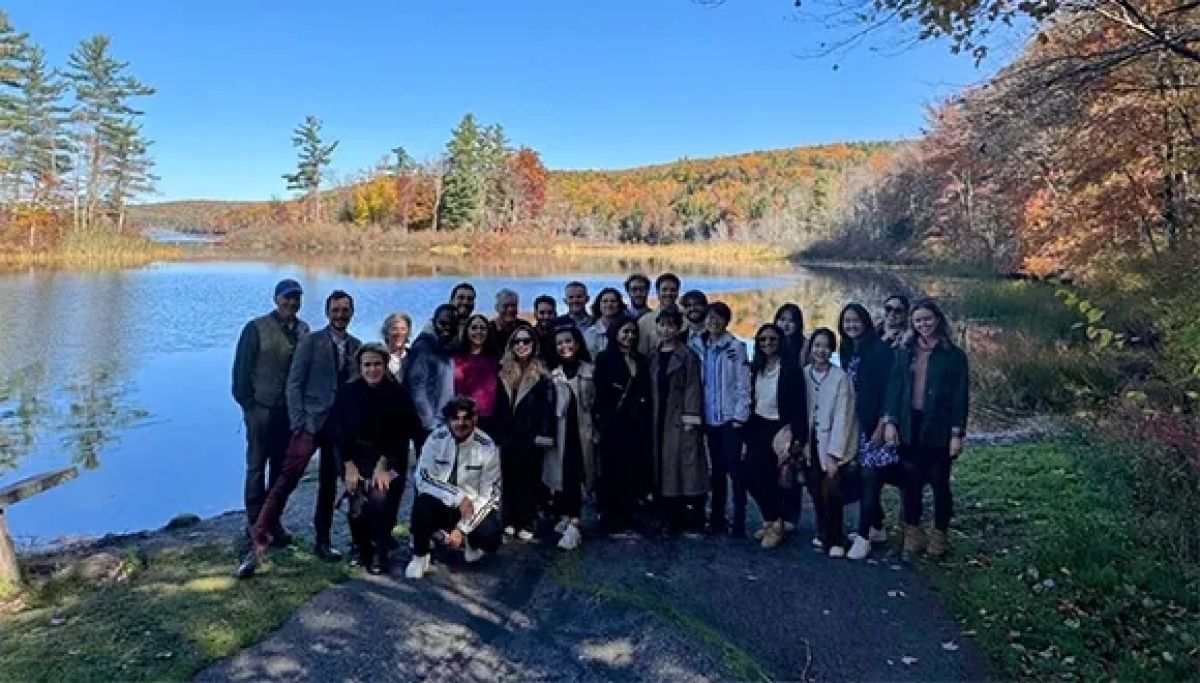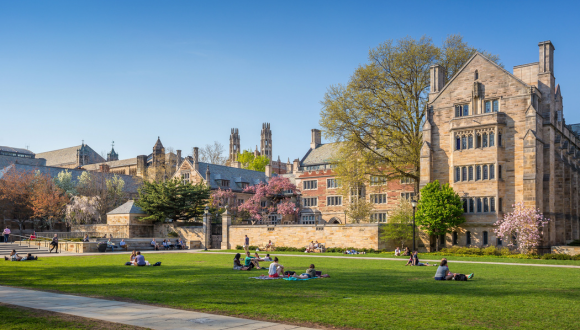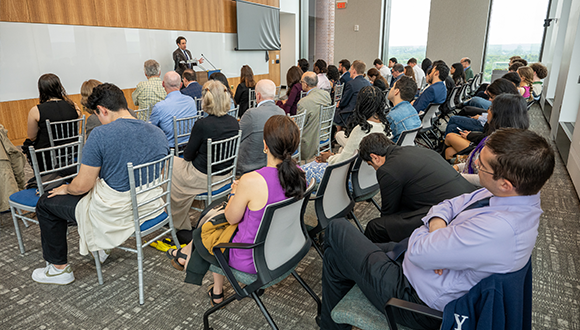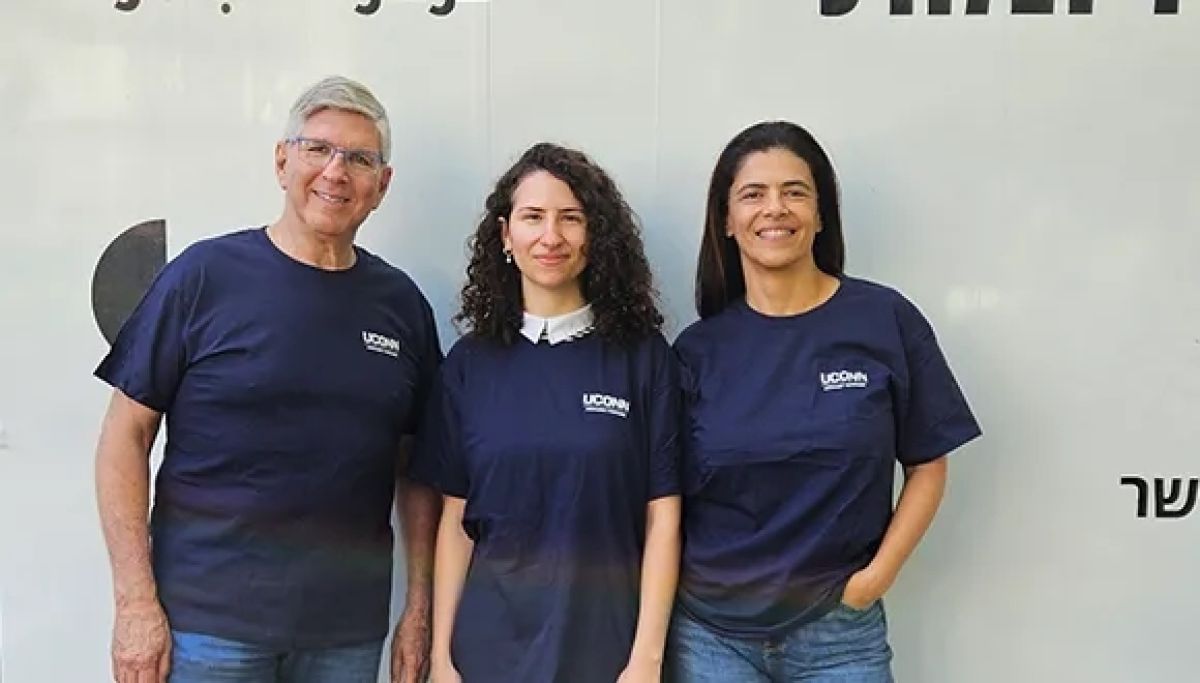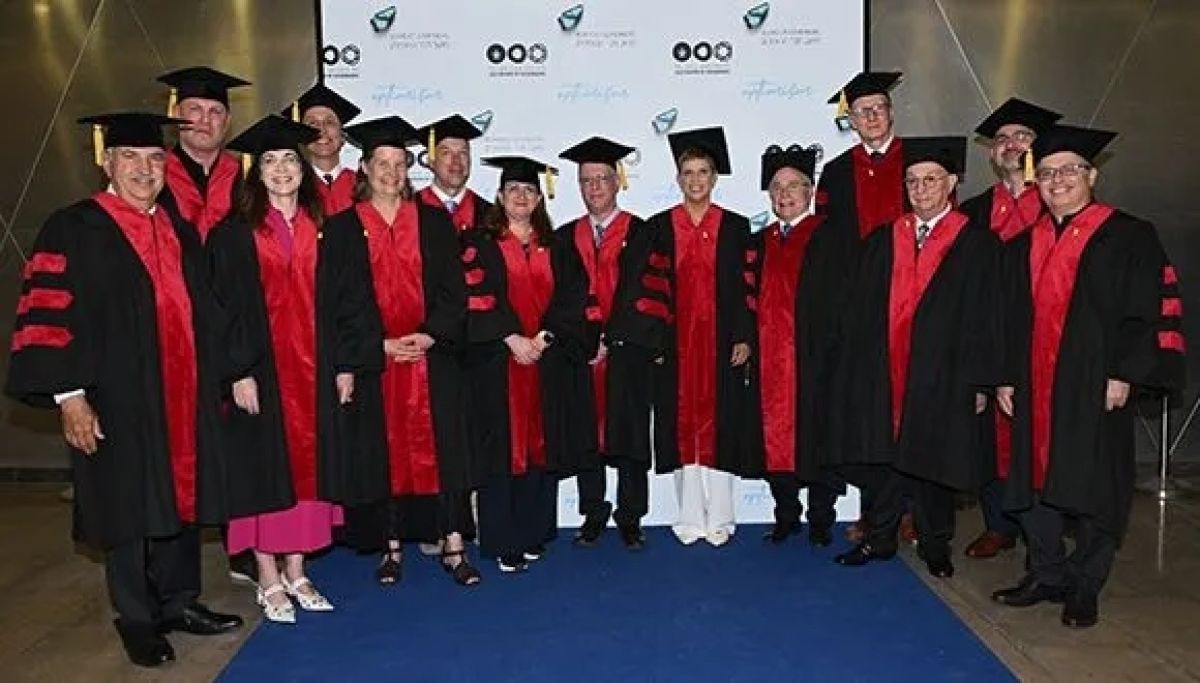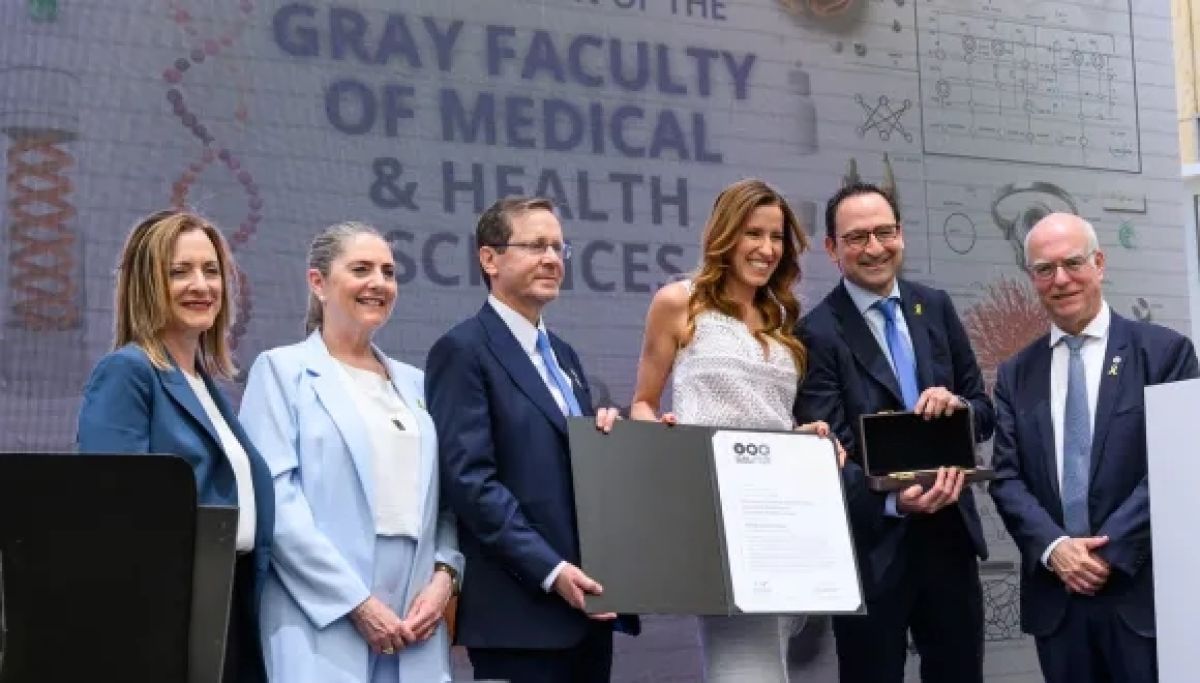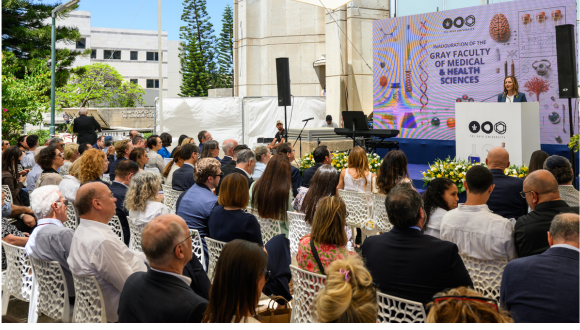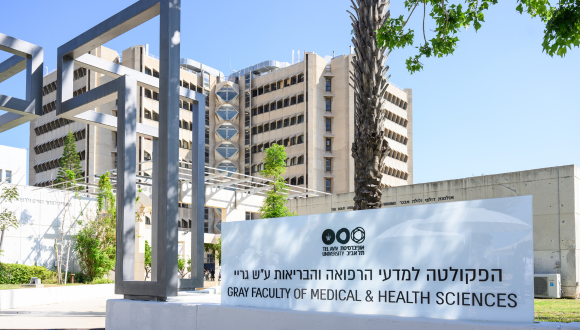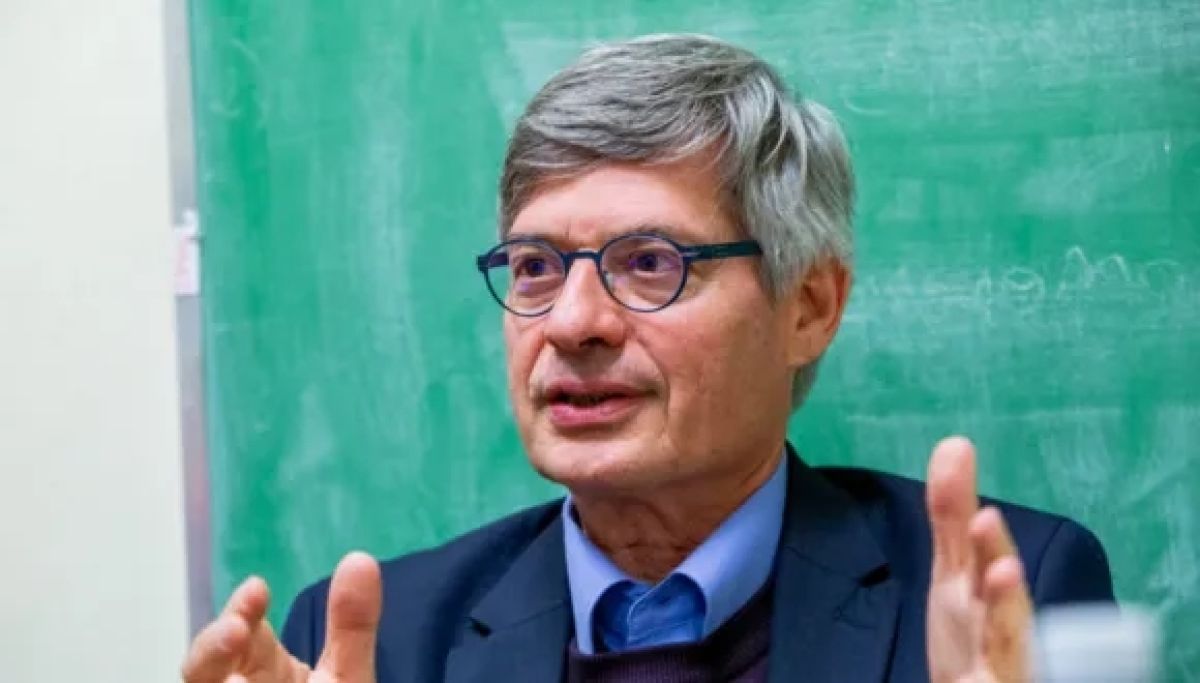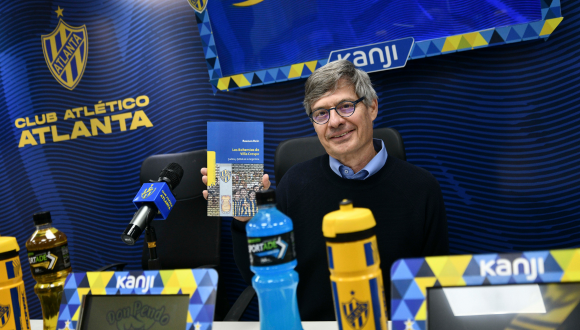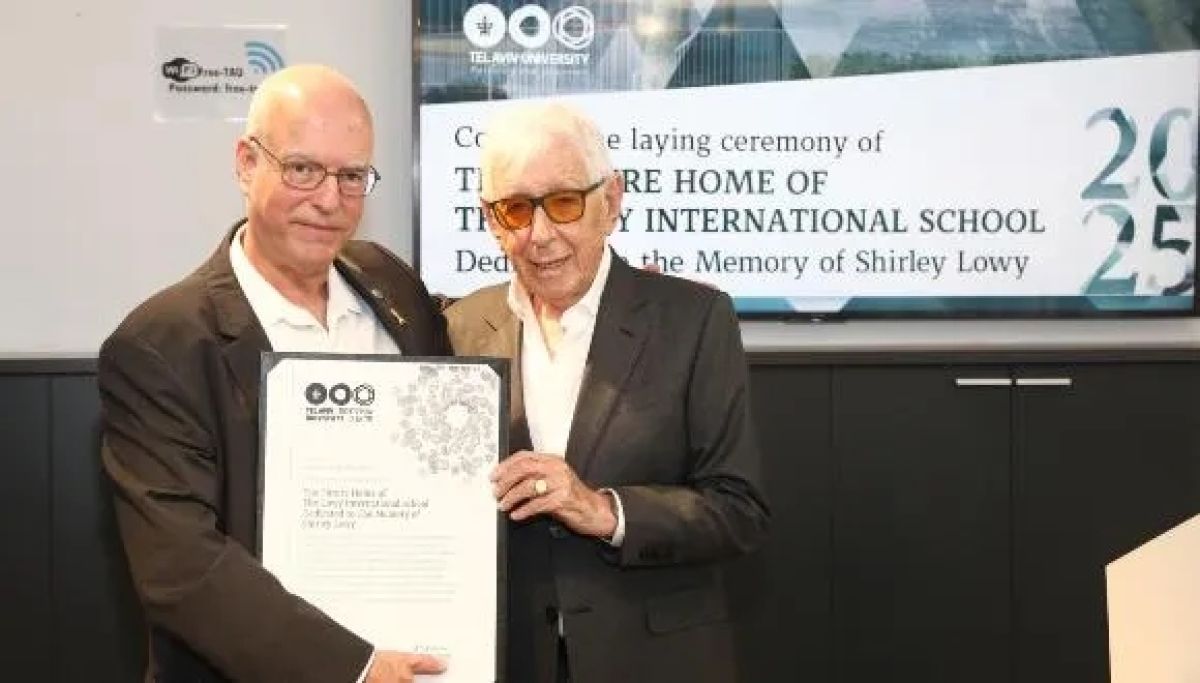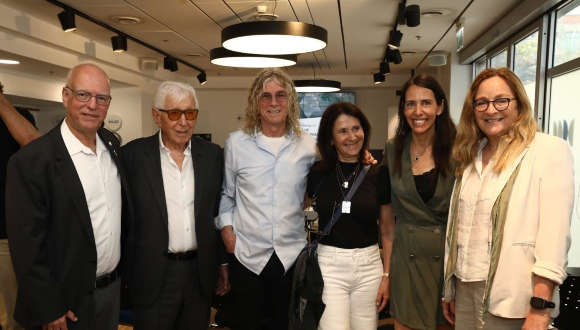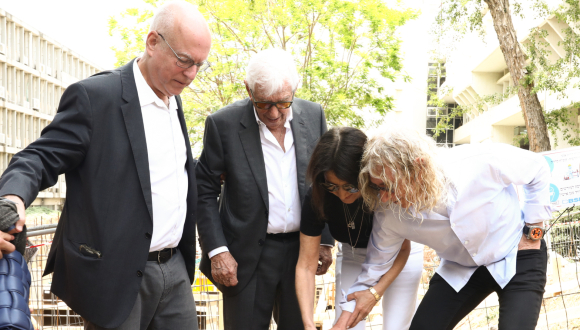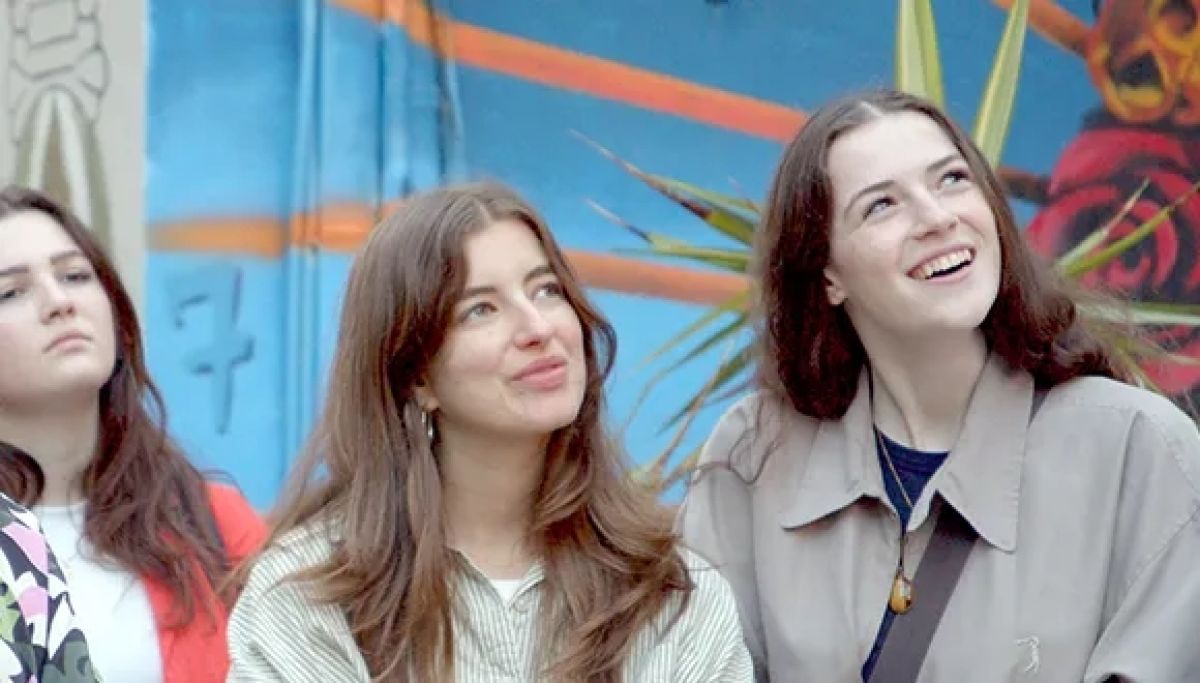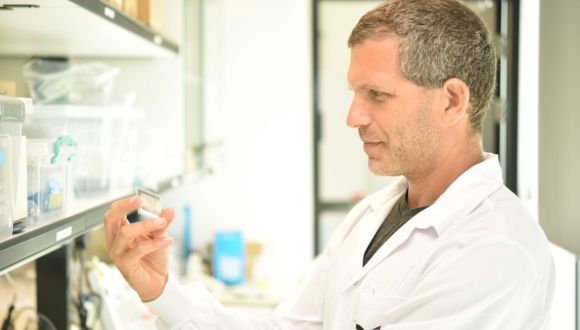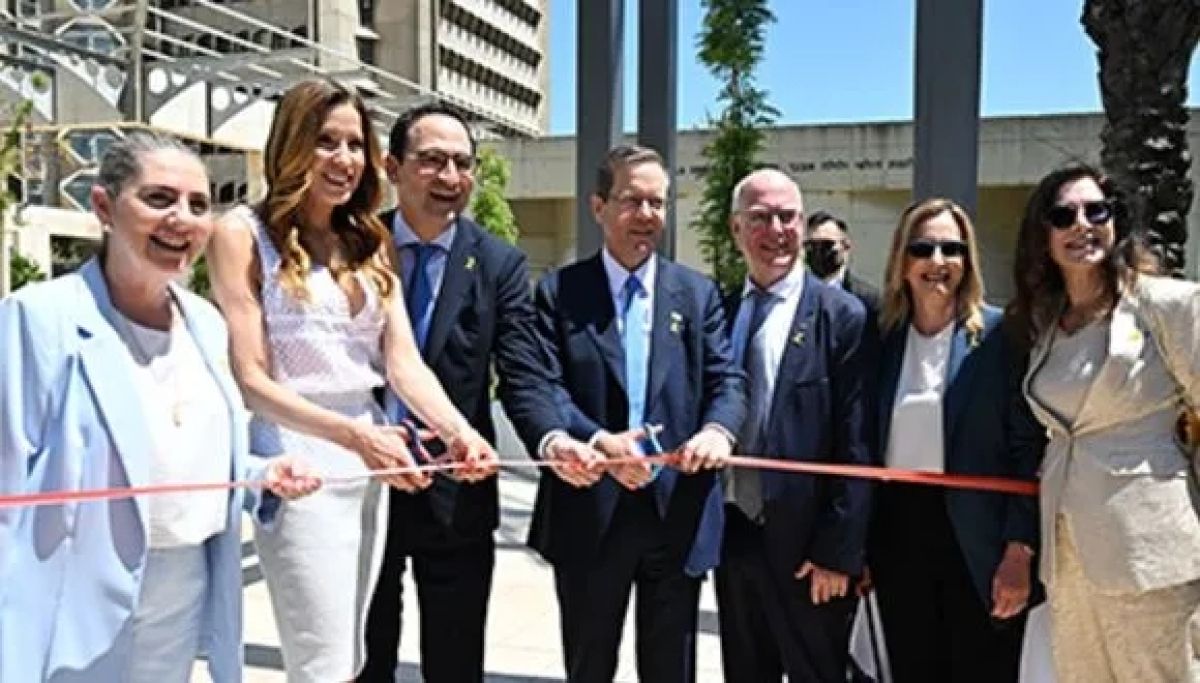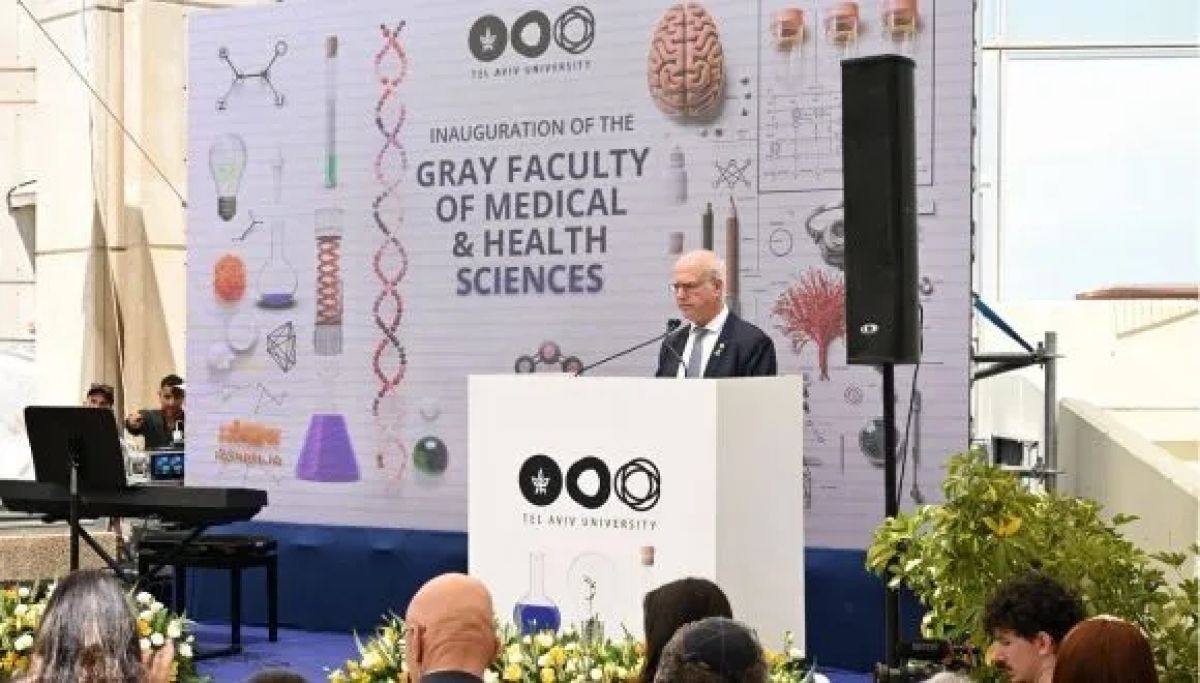The Lowy Quarterly Newsletter: Fresh Edition
“We Stand Strong and Keep Our Sights on a Better Future”
May 27, 2025
Message from Prof Milette Shamir, Vice President International, Tel Aviv University
“In these turbulent months, I’ve been deeply moved by the extraordinary acts of humanity and expressions of hope that continue to emerge. Since October 7, my colleagues and I have witnessed countless gestures of solidarity; reminders of the resilience and generosity that sustain our community. One particularly humbling example came recently from Mindy and Jon Gray, whose monumental gift to Tel Aviv University—the largest in our history—underscores their deep belief in the power of academia to shape a better future for Israel and the world.”
February 27, 2025
Message from Prof Milette Shamir, Vice President International, Tel Aviv University
“Since the ceasefire with Hamas began in January, Israel—including Tel Aviv University (TAU)—has been navigating a period of cautious hope. The return of hostages occasioned a collective feeling of joy and relief, even as unfolding tragedies evoked a deep, shared mourning. While we don’t exactly know what the next months will bring, we remain committed as ever to doing what universities do best. And we remain heartened by the increase in flights and visitors we’ve had—there is nothing more we want than to continue collaborating and researching and connecting with you, as we keep our eye on a better world.”
“Know that we are always committed to working with you and will do our best to roll out the red carpet should you choose to visit. There is still so much for us to do, to discuss and to build—together. May these coming months bring us ample opportunities to do so, and may we continue to see the hope and the light through the clouds.”
The full newsletter
January 19, 2025
Today, a ceasefire with Hamas came into effect. This follows a ceasefire with Hezbollah, which came into effect on November 27, 2024.
November 28, 2024
Message from Prof Milette Shamir, Vice President International, Tel Aviv University
“Academic creativity, innovation, and collaboration offer the world its best chance for a better future. In times when our societies may fail to recognize this, we must make the case ourselves—boldly, together, and with an unwavering commitment to our shared values.”
Read the full message in the latest issue of the Lowy International Newsletter.
October 1, 2024
We want to assure you that The Lowy International School remains safe at this time and all necessary precautions have been taken to prioritize the continued safety and wellbeing of our team and community.
Learn more about safety & security at TAU
September 2, 2024
A Message from VERA Association of University Heads, Israel
The Association of University Heads, Israel (VERA) announces that Israel’s research universities will join the nationwide strike, calling for the promotion of a deal to secure the release of the hostages. The university leaders reiterate their call for the Israeli government to prioritize the release of the hostages as the nation’s top priority.
August 1, 2024
Message from Prof Milette Shamir, Vice President International, Tel Aviv University
“With August here, we are finally bringing our academic year to a close at Tel Aviv University (TAU). The original schedule looked quite different; then October 7 happened, followed by a war, and the school year was postponed. We adapted to the best of our ability, and we continue to adapt, focusing primarily on making sure no one in our academic community is left behind and that our students, staff, and faculty are all cared for. We continue to focus on safety and actively monitor the situation in Israel.”
Read the full message in the latest issue of the Lowy International Newsletter
Please keep up-to-date on our latest safety and security information on our website.
May 9, 2024
Setting the Record Straight
Since its founding in 1956, TAU has been dedicated to advancing excellent research and world-class education. Evolving amidst a history of violent regional conflicts, as well as within a society marked by ethnic and religious tensions and political polarization, the university has remained steadfast in its commitment to fostering peace and to safeguarding democracy and human rights. We work actively on integrating the diverse sectors of Israeli society and extending the promise of higher education to minority students, including Palestinians. Renowned for its pluralism, our campus is a place where contentious issues are rigorously examined based on reason and facts, and where faculty members are empowered to explore ideas that challenge the prevailing consensus in Israel.
Read the full Statement by Tel Aviv University
April 16, 2024
Following the episode with Iran, TAU and The Lowy International School are operating in accordance with Israel’s Home Front Command and other government agencies. The recently placed restrictions on gathering and educational activities have now been lifted. Our focus continues to be on prioritizing the safety and well-being of our international community, with whom we are in direct contact.
For more information on safe areas on campus and in the dormitories, as well as other safety guidelines, please see our Safety, Health and Security page.
We will continue to update you on any changes.
Lowy’s international programs are running as scheduled.
At the same time, classes in programs following the Israeli academic calendar began on December 31, 2023. All the universities have decided to push back the start of the academic year because many Israeli students and faculty have been called up for reserve duty in these challenging times of war.
Semester dates and exam periods for programs following the Israeli academic calendar have been adjusted accordingly:
- First Semester (11 weeks of studies): December 31, 2023, to March 15, 2024.
- First Semester Exam Period (7 weeks): March 17, 2024, to May 17, 2024.
- Second Semester (11 weeks): May 19, 2024, to August 5, 2024.
- Second Semester Exam Period / Summer Semester: August 6, 2024, and onwards.
- Opening of Academic Year 2024-2025: November 3, 2024.
Program managers will most certainly keep all the students updated about the semester and exam dates.
February 21, 2024
New TAU Initiative to Help Student Reservists
TAU introduces a new admissions pathway supporting reservists, evacuated citizens and families of fallen soldiers
Tel Aviv University announced that for the next school year, many hundreds of students who serve in the IDF reserves will be eligible for admission to study for a bachelor’s degree through a new admission route that will be opened for them in all fields of study on campus (excluding medicine), without the need for a psychometric exam. The admission will be available to candidates who served 60 days or more in 2023 (starting from October 7th 2023) or those who served longer than 28 days in 2024 (from January 1, 2024).
More details available here
January 25, 2024
Message from Prof Milette Shamir, Vice President International, Tel Aviv University
With the arrival of 2024, many around the world have welcomed new beginnings. At Tel Aviv University (TAU), we rang in the new year by officially starting our academic term. Of course, the start of the new term in no way diminishes the fact that today is Day 111. We are still mourning those taken from us too soon, both on October 7 and since then. And we are still advocating for the return of the more than 130 Israeli hostages who remain in Gaza; they are our parents, children, grandchildren, cousins and friends, and giving up on them is not an option.
Even as the ripples of October 7 continue to affect our daily lives, we know we need to find strength in what gives us meaning. For us in academia, so much of this comes from our research, our teaching, our learning and our community.
In this first month of TAU’s academic term, while there have certainly been hard times, I also see a renewed sense of hope. I see labs once again brimming with researchers and ideas, local students reunited and running clubs, and faculty members bumping into one another in the hallways. While there are fewer international visitors, we are certainly still welcoming delegations, including one recently from the University of Pennsylvania (you can read about it below). We are also sending our own talented students on trips abroad, including to the recent Global Young Scientists Summit in Singapore.
Of course, we are not back to normal. Most notably, we still wait anxiously to welcome many of our students from the reserves. We are optimistic that we will see more and more of them in the coming weeks, and we have an academic plan, as well as financial and psychological support, to help these students to not only transition but thrive.
Together, we stand strong and keep our sights on a better future; this first month at TAU, if anything, has been a beautiful testament to this.
Lowy International Bulletin #10
December 14, 2023
Partner Universities Invite TAU Students to Apply for Outgoing Exchange Programs
The call for applications is now open for TAU undergraduate and graduate students looking to go on exchange in Fall 2024.
Lowy International Bulletin #9
December 7, 2023
Letter from the Israeli Association of University Heads Regarding Statements by American University Presidents during Congressional Hearings
“The university presidents’ failure to provide a firm stance in dealing with instances of antisemitism and anti-Israel sentiment on many campuses in the United States is alarming. Apologies and expressions of regret are not enough; what is required are clear and decisive actions. In their testimony before Congress, the university presidents mentioned measures taken or planned to protect the security and well-being of Jews and Israelis on campuses.
It is now their responsibility to ensure the effectiveness and sufficiency of these measures. The burden lies on their shoulders to demonstrate that the universities they lead not only excel in academics but also uphold universal humanistic values and defend the rights of minorities.
It is imperative that everyone understands that advocating for the destruction of a people is strictly prohibited at Harvard, MIT, Pennsylvania, and everywhere else in the world.”
Read the full letter here
November 30, 2023
Lowy International Bulletin #8
In the eighth issue of the Lowy International Bulletin, Joshua Younger, a medical doctor and an assistant professor at the Zucker School of Medicine at Hofstra University in New York State, as well as a TAU alumnus, talks about the pledge of support from the alumni of TAU’s American School of Medicine. Joshua was one of the initiators of the pledge, which now has over 120 signees offering their volunteer medical services to the state of Israel.
The bulletin also includes updates on TAU events and volunteer efforts.
Lowy International Bulleting #8
November 16, 2023
Message from Prof Milette Shamir, Vice President International, Tel Aviv University
It is now day 41 of the Israel-Hamas war. There is a prevailing feeling among us at Tel Aviv University (TAU) that, by continuing our work and doing it well, we are in our own way standing up to terror. This strength, this resilience, is seen across the University.
I have heard countless stories of researchers doing everything they can to keep their labs running, amid coworkers who are either abroad, tending to their families, volunteering, or in the reserves. We continue to apply for grants and funding, and we very much appreciate the extensions that have been granted, like from Horizon Europe.
We continue to celebrate new research findings and new academic books by our colleagues.
We recognize, too, that we are indeed not alone in this. We have received offers from colleagues abroad who volunteered to teach in place of faculty members who are serving in the reserves. Some of our international partners offered to increase funding for collaborative research programs and joint projects.
At TAU, across our faculties and departments, we are sowing the seeds for a brighter future. Our focus extends beyond mere survival. This moment is about fostering recovery and growth and emerging stronger than before.
Lowy International Bulletin #7
November 9, 2023
University President Calls for Immediate Release of Hostages
University President Ariel Porat has called for an immediate release of hostages from Gaza:
“Irrespective of one’s opinion about the Israeli-Palestinian conflict, the world cannot remain silent in the face of pure evil. This is not, by any means, ‘legitimate resistance.’ This is a clear crime against humanity and one that we must condemn and fight.
We ask that you don’t stay silent. Demand their immediate release.
Speak for the hostages, since they are deprived of the right to speak to the world. Be their voice. Now.”
Lowy International Bulletin #6
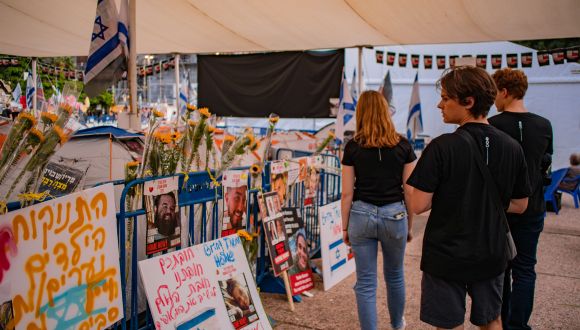
November 7, 2023
Memorial Ceremony on Campus
Tel Aviv University’s community commemorated 30 days since the brutal attacks on Israeli citizens on Oct. 7th. Over 50 TAU families were directly affected by the attacks.
“We’ve been raised on the values of sanctity of life. What we learned is that there are things more horrendous than murder,” said President Porat at the ceremony.
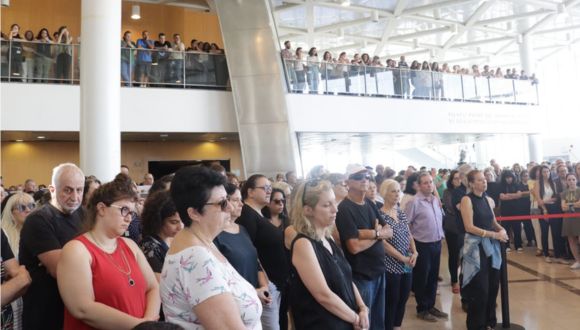
Also, on November 7, International students participated in a first-aid training session in English led by Magen David Adom instructors on TAU campus.
November 2, 2023
Message from Prof Milette Shamir, Vice President International, Tel Aviv University:
“Currently, more than 15% of our student population is Arab-Israeli; we have made it a priority to ensure these students feel safe coming to the University. We instated a zero-tolerance policy toward incitement and hate speech on our campus, regardless of whether these are directed at Jews or Arabs.
As with all of our students, we have been offering our Arab-Israeli students a variety of mental health and academic supports, paying particular attention to their unique circumstances. Led by Prof. Neta Ziv, Vice President for Equity, Diversity and Community, TAU has been holding regular group and individual meetings with minority students to better understand and address their concerns.
In these challenging times, we must do all we can to support all members of our academic community, especially those who may be feeling vulnerable. We are facing manifold difficulties and tragedies; however, those with agency have a responsibility to fight hate. By embracing diversity and actively addressing its challenges, we will emerge a stronger, more supportive community when peace is finally restored.”
Lowy International Bulletin #5
The Lowy International Student Task Force has released an open letter calling on students worldwide to unequivocally condemn terrorism
October 31, 2023
Members of the Lowy International School community have joined the Israeli-wide volunteer effort to help farmers in the south. Read the full story here
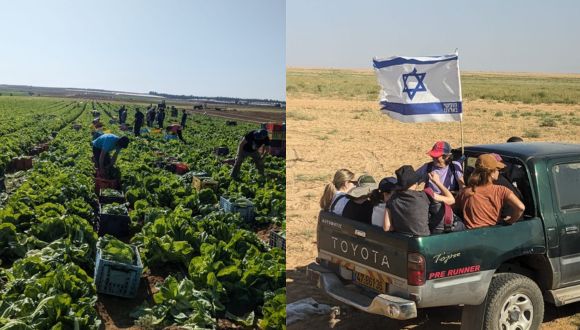
October 24, 2023
Lowy International Bulletin #4
Video of the UNITED AGAINST TERRORISM exhibit at the Smolarz auditorium
October 22, 2023
We wish to maintain communication with our international students during these challenging times.
This form is designed by the Student Life team to gather information about your current circumstances allowing us to offer support, guidance and student life activities.
International students are kindly asked to provide the information as of October 22.
For those students who decide to travel home for the time being, kindly inform us via email madrichimosp@mail.tau.ac.il
In the face of terror, one of the most important things we can do is continue with a semblance of normalcy; by continuing on with what we set out to do, we are sending the message to Hamas that we are strong and will prevail. Here, at Tel Aviv University, we are committed to providing students with an excellent education.
With that in mind, and after careful deliberation, we made the decision to begin the term for the majority of international degree programs on October 22. Studies will begin in a hybrid format so that students can study remotely. Hebrew programs are now scheduled to begin on November 5.
The later date for the wider TAU community is because many Israeli TAU students are currently in the army reserves (milium).
We would not be beginning the term if we felt it was unsafe. We want to highlight, moreover, that all of our international programs will be extra sensitive to student needs at this time, and we suggest students contact program coordinators about any concerns.
October 19, 2023
Student Initiatives at Lowy International
Our international students at TAU have set up a new task force aimed at countering disinformation and antisemitism, and are now meeting daily on Zoom to strategize how they can share the story of what they’re encountering on-the-ground in Israel.
You can learn more about the task force’s story here. Are you on campus and want to join? Contact the Student Life Team at 052-5346188.
On campus, international students are joining the university-wide aid efforts, offering their dorm apartments to families from the south of the country and organizing charity drives to collect food and donations for civilians in need.
Read more about the international student involvement in charity work here.
Meanwhile, Smolarz Hall at Tel Aviv University is hosting a poignant exhibition featuring over a thousand photos of missing people, abductees, and victims of the Iron Swords war. The Tel Aviv University Student Union is proud to collaborate on this project alongside esteemed universities like Harvard, Yale, MIT, NYU, Michigan University, Columbia University, and more. Our deepest wish is that every chair in this hall were filled by the people in these pictures.
The exhibition UNITED AGAINST TERRORISM will be open for the whole of next week.
Opening hours for October 22: 8AM – 2PM
Lowy International Bulletin #3
October 12, 2023
Flexible Start of the Academic Year
Tel Aviv University has currently postponed the academic term’s start date to November 5th. For all our international programs, each program head has tailored its start date to meet our students’ needs, and have informed all students about their specific starting dates. In addition, hybrid options are offered to prioritize safety and provide a flexible learning environment.
For study abroad programs, the start date is October 16.
Most international degree programs will commence the week of October 22, 2023. However, some will start on November 5, aligning with the rest of TAU’s programs.
For further updates, please reach out to your program coordinators.
Read the message from the University President Ariel Porat here
Lowy International Bulletin #2
October 10, 2023
Please feel free to opt-in to the Lowy International School Bulletin with regular updates regarding safety, wellbeing sessions, protocol and scheduling here.
Your solidarity means so much to us, and we value your friendship and continued commitment. Thank you again for the many kind words and patience during this time.
Read the full statement by Professor Milette Shamir, Vice President International of Tel Aviv University, here
Lowy International Bulletin #1
October 9, 2023
Emotional Support Hotline Available to University Community
Dear Students,
In these trying times, our hearts go out to the residents of the southern regions of Israel, the IDF soldiers, and the emergency response teams.
In light of the current situation in Israel, we regret to inform you that the start of the academic year will be postponed to October 22 instead of October 15 as originally planned.
The orientation week originally planned for this week has been canceled. We will follow the events and if possible we will have limited activities in the future.
We would like to assure you that your safety and academic success are a top priority for TAU and for the Lowy International school. We are here to support you as you begin your journey with us. Even though your school year has not yet started, we consider you a part of the Tel Aviv University community. We have established a hotline run by the campus psychological services, available in Hebrew and English.
If you would like to access these services, please download and complete this form and email it to clinic@tauex.tau.ac.il prior to the initial intake. Alternatively, you can leave a short WhatsApp message with your name and number at this WhatsApp number +972-50-2787037, a psychotherapist will contact you as soon as possible.
Should anyone in our international student community need further guidance, please email: hstlife@tauex.tau.ac.il or call our 24/7 mobile number 052-5346188.
We are thinking of all of you and ask you to be careful to follow the instructions of the Home Front Command, and above all to take care of yourselves and your loved ones.
We hope for calmer times ahead and for all of us to resume our daily routines, including studying, conducting research, and meeting one another.
Sincerely,
Tel Aviv University
October 7, 2023
Sirens have gone off in Tel Aviv, along with other locations in Israel, alerting us to an incoming missile attack. These sirens are part of the “Iron Dome” system which alerts and protects us in Israel at any given time.
All international students have been given instructions on how to proceed. We are actively monitoring the situation and will continue to be in contact with our international community.
Should anyone in our international student community have a question, our 24/7 on call Student Life Team can be reached at 052-5346188.
We encourage you to check this site for additional updates.


